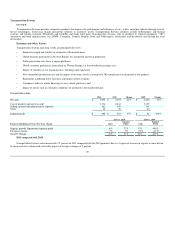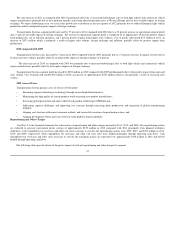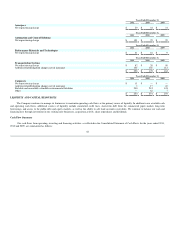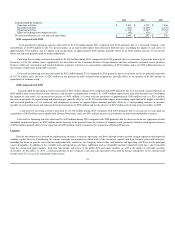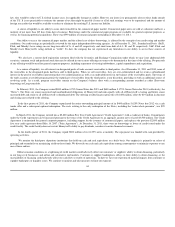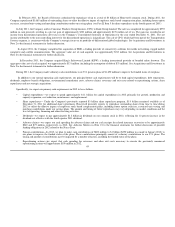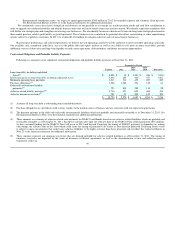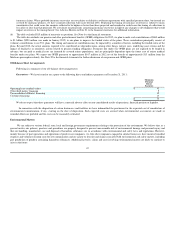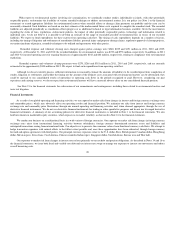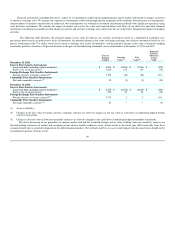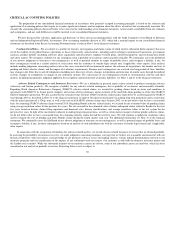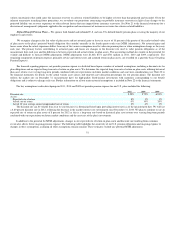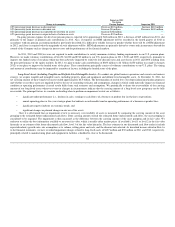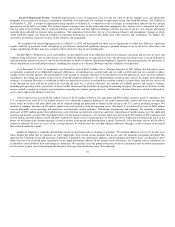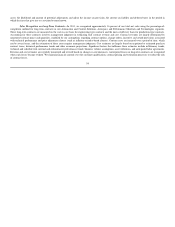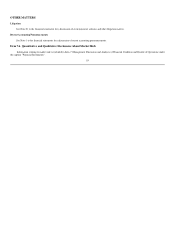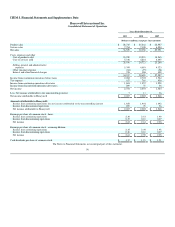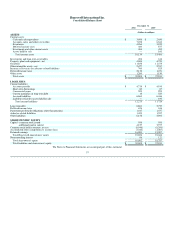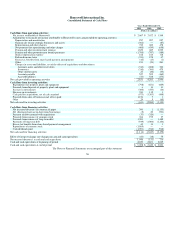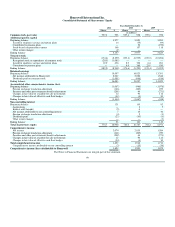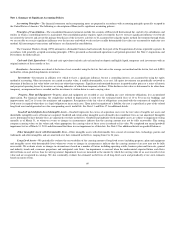Honeywell 2011 Annual Report Download - page 53
Download and view the complete annual report
Please find page 53 of the 2011 Honeywell annual report below. You can navigate through the pages in the report by either clicking on the pages listed below, or by using the keyword search tool below to find specific information within the annual report.
CRITICAL ACCOUNTING POLICIES
The preparation of our consolidated financial statements in accordance with generally accepted accounting principles is based on the selection and
application of accounting policies that require us to make significant estimates and assumptions about the effects of matters that are inherently uncertain. We
consider the accounting policies discussed below to be critical to the understanding of our financial statements. Actual results could differ from our estimates
and assumptions, and any such differences could be material to our consolidated financial statements.
We have discussed the selection, application and disclosure of these critical accounting policies with the Audit Committee of our Board of Directors
and our Independent Registered Public Accountants. New accounting standards effective in 2011 which had a material impact on our consolidated financial
statements are described in the Recent Accounting Pronouncements section in Note 1 to the financial statements.
Contingent Liabilities—We are subject to a number of lawsuits, investigations and claims (some of which involve substantial dollar amounts) that arise
out of the conduct of our global business operations or those of previously owned entities, including matters relating to commercial transactions, government
contracts, product liability (including asbestos), prior acquisitions and divestitures, employee benefit plans, intellectual property, and environmental, health
and safety matters. We recognize a liability for any contingency that is probable of occurrence and reasonably estimable. We continually assess the likelihood
of any adverse judgments or outcomes to our contingencies, as well as potential amounts or ranges of probable losses, and recognize a liability, if any, for
these contingencies based on a careful analysis of each matter with the assistance of outside legal counsel and, if applicable, other experts. Such analysis
includes making judgments concerning matters such as the costs associated with environmental matters, the outcome of negotiations, the number and cost of
pending and future asbestos claims, and the impact of evidentiary requirements. Because most contingencies are resolved over long periods of time, liabilities
may change in the future due to new developments (including new discovery of facts, changes in legislation and outcomes of similar cases through the judicial
system), changes in assumptions or changes in our settlement strategy. For a discussion of our contingencies related to environmental, asbestos and other
matters, including management's judgment applied in the recognition and measurement of specific liabilities, see Notes 1 and 21 to the financial statements.
Asbestos Related Contingencies and Insurance Recoveries—We are a defendant in personal injury actions related to products containing asbestos
(refractory and friction products). We recognize a liability for any asbestos related contingency that is probable of occurrence and reasonably estimable.
Regarding North American Refractories Company (NARCO) asbestos related claims, we accrued for pending claims based on terms and conditions in
agreements with NARCO, its former parent company, and certain asbestos claimants, and an estimate of the unsettled claims pending as of the time NARCO
filed for bankruptcy protection. We also accrued for the estimated value of future NARCO asbestos related claims expected to be asserted against the NARCO
trust through 2018 as described in Note 21 to the financial statements. In light of the inherent uncertainties in making long term projections and in connection
with the initial operation of a 524(g) trust, as well as the stay of all NARCO asbestos claims since January 2002, we do not believe that we have a reasonable
basis for estimating NARCO asbestos claims beyond 2018. Regarding Bendix asbestos related claims, we accrued for the estimated value of pending claims
using average resolution values for the previous five years. We also accrued for the estimated value of future anticipated claims related to Bendix for the next
five years based on historic claims filing experience and dismissal rates, disease classifications, and average resolution values in the tort system for the
previous five years. In light of the uncertainties inherent in making long-term projections, as well as certain factors unique to friction product asbestos claims,
we do not believe that we have a reasonable basis for estimating asbestos claims beyond the next five years. We will continue to update the resolution values
used to estimate the cost of pending and future Bendix claims during the fourth quarter each year. For additional information see Note 21 to the financial
statements. We continually assess the likelihood of any adverse judgments or outcomes to our contingencies, as well as potential ranges of probable losses and
recognize a liability, if any, for these contingencies based on an analysis of each individual issue with the assistance of outside legal counsel and, if applicable,
other experts.
In connection with the recognition of liabilities for asbestos related matters, we record asbestos related insurance recoveries that are deemed probable.
In assessing the probability of insurance recovery, we make judgments concerning insurance coverage that we believe are reasonable and consistent with our
historical experience with our insurers, our knowledge of any pertinent solvency issues surrounding insurers, various judicial determinations relevant to our
insurance programs and our consideration of the impacts of any settlements with our insurers. Our insurance is with both the domestic insurance market and
the London excess market. While the substantial majority of our insurance carriers are solvent, some of our individual carriers are insolvent, which has been
considered in our analysis of probable recoveries. Projecting future events is subject to
50


